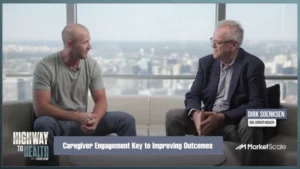President Biden’s National Drug Control Strategy
The opioid crisis in the United States is on the rise. Overdose deaths continue to escalate, even with increased measures to curtail illegal access to subscription medication. The CDC estimates annual overdose deaths top 100,000. On April 21, 2022, President Biden provided Congress with his administration’s first National Drug Control Strategy. The strategy focuses on two drivers of the epidemic: untreated addiction and drug trafficking.
Eliminating Illegal Drugs Does Not Eliminate Addiction
The President’s Drug Control Strategy proposes several methods for reducing domestic and international drug production and trafficking, including increased border protection and $300 million in the Drug Enforcement Administration’s budget. How much of an impact will these efforts make? It is impossible to determine at present, but Dr. Michael Sprintz, Founder and CEO of the Sprintz Center for Pain, pointed out that even if the United States could eliminate all illegal drugs coming across its borders, drug addiction would not simply go away.
“Eliminating the supply does not change the demand,” said Dr. Michael Sprintz. “We saw this play out as the DEA decreased the availability of prescription opioids, and yet what happened was the demand for opioids from people with addictive disease didn’t decrease.”
Harm reduction efforts are another important component in the fight against addiction, as the availability of fentanyl and other synthetic drugs make overdoses more common and more deadly. In 2020, the U.S. attributed 56,516 overdose deaths to synthetic opioids (primarily fentanyl.) Increasing the availability of life-saving drugs like NARCAN® and safe needle-exchange programs will help save lives. Still, harm reduction efforts do not solve the core problem, which is treating the addiction and getting patients the care they need to recover.
It’s Not Just About Getting Access to Care
Increasing access to care is a welcomed part of the Biden plan, but care, in and of itself, is not a total solution. “It’s about having access to evidence-based, affordable care,” Dr. Sprintz said. “You can have access to care to get treatment for a substance abuse problem, but if you can’t afford it, it doesn’t matter that you have access to it.”
Affordable, available, and successful treatment services are paramount to stopping addiction in this country. “If we don’t have treatment services to help people not just get sober, but stay sober, to give them the tools to help them cope with life on life’s terms, then we’re screwed,” Dr. Sprintz said.
The efforts to make more affordable treatment services available to people suffering from addiction is what Dr. Sprintz believes is the most important takeaway from the Biden drug control strategy. “We need to give access to care to as many people as we can and do it in a way that we can afford it.”









